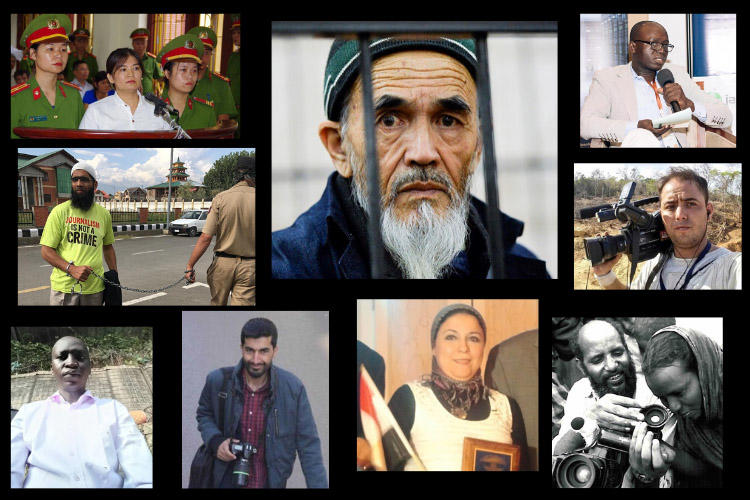This year, journalists worldwide faced attacks, arrests, and censorship. In September, we released our annual 10 Most Censored list, highlighting the range of online and offline techniques used to censor journalism and restrict press freedom.
Meanwhile, protests in over two dozen countries posed risks to members of the press. Journalists faced threats while covering civil unrest in Albania, Algeria, Azerbaijan, Bolivia, Burundi, Cambodia, Canada, Chile, Colombia, Ecuador, Egypt, Ethiopia, France, Haiti, Hong Kong, Honduras, Indonesia, Iran, Iraq, Israel and the Occupied Palestinian Territory, Italy, Kazakhstan, Liberia, Myanmar, Northern Ireland, Nigeria, Paraguay, Puerto Rico, Russia, Spain, Sudan, Turkey, and Venezuela.
Internet shutdowns, restrictions on internet access, and social media censorship also threaten press freedom and limit journalists’ ability to do their jobs. Throughout the year, there were internet shutdowns in Chad, the Democratic Republic of the Congo, Ethiopia, Equatorial Guinea, Gabon, Indonesia, Iran, Iraq, Kashmir, Mauritania, Myanmar, Sudan, Venezuela, and Zimbabwe, among others. Watch our video explainer about internet shutdowns here.
Efforts by governments and social media platforms to limit the circulation of problematic material online, from extremism to disinformation, continued to ensnare journalists and threaten independent reporting. This year, new technology regulations that risk restricting journalism emerged in Algeria, Australia, Cuba, Egypt, Ethiopia, the European Union, Israel and the Occupied Palestinian Territory, Kazakhstan, Liberia, New Zealand, Russia, Sri Lanka, Singapore, and Turkey.
For female journalists in the U.S., rape threats, stalkers, and harassment can come with the beat and, in a survey of female and gender non-conforming journalists in the U.S. and Canada, more than 70 percent of respondents said they had experienced safety issues or threats. In sports journalism, female reporters are often harassed by fans online.
For more of what happened regarding press freedom this year, take a look at CPJ’s most-read blogs from 2019:
- In Kashmir, news media faced an existential crisis amid restrictions and arrests, and police arrested and obstructed members of the press
- CPJ analyzed 53 legal demands made by India to Twitter since August 2017 and found that Twitter withheld 800,000 Kashmir-related tweets in India
- Taiwan’s digital minister spoke to CPJ about combatting disinformation without censorship
- CPJ examined President Trump’s tweets in January, finding that he had sent 1,339 tweets about the media that were critical, insinuating, condemning, or threatening
- Tech journalists voiced concern over the prosecution of WikiLeaks founder Julian Assange
- Under Prime Minister Abiy Ahmed, Ethiopia’s media have more freedom but challenges remain. In this era of reform, Ethiopia still reverts to old tactics to censor the press
- How many journalists are jailed in China? Censorship means we don’t know
- In Egypt, ‘freedom’ ends daily at 6 p.m. for Shawkan and Abdelfattah
- Supreme Court could limit FOIA, curtail investigative reporting
- Maduro’s internet blackout stifles news of Venezuela crisis
- Deyda Hydara’s daughter: ‘I am still crying’ for murdered Gambian journalist
- Q&A: Isma’il Kushkush and Sophia Cope on U.S. court ruling against warrantless border searches
Special reports on press freedom in 2019:
In our 2019 report on killed journalists, CPJ found 25 journalists killed for their work as of December 13. In this year’s prison census, CPJ found 250 journalists imprisoned around the world on December 1.
CPJ’s 2019 Impunity Index highlights countries where journalists are murdered and their killers go free. This year’s report found that of the 318 journalists murdered from September 1, 2008, to August 31, 2018, no perpetrators were successfully prosecuted in 86 percent of cases.
Our other special reports from 2019:
